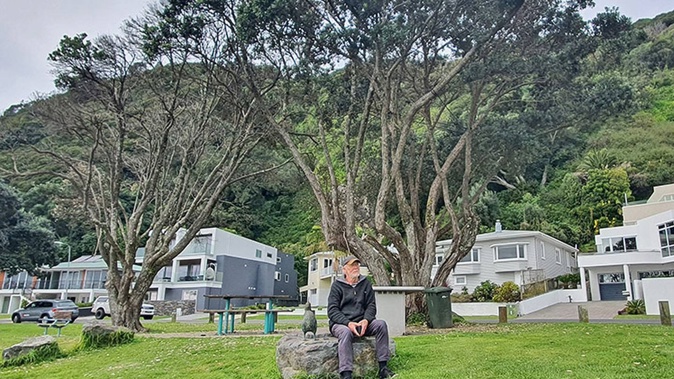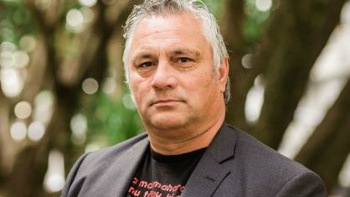

A second pohutukawa tree at The Heads is suspected to have been poisoned and is dying beside what a Whakatāne resident describes as “the sad skeleton” of a tree vandalised in a similar way last year.
Retired plant pathologist Duncan Smith said sudden leaf fall showed the tree shading the public barbecue at Wairaka Centennial Park had been poisoned in the past few days.
“It’s a wicked thing to do,” he said.
“Even now, you can see that the chemical used to kill it is still active in the ground around the tree by the yellowing of the grass. There is even leaching of it towards the river, as seen by a distinct yellow path, a metre wide, going down towards the river.
“This is the fifth or sixth tree poisoned like this in the last few years.”
Whakatāne District Council open spaces manager Ian Molony agreed.
“There’s simply nothing we can do for this tree now.
“The leaves are shedding suddenly, which is consistent with poisoning, and there are signs of dieback, which will continue as the poison moves through the tree,” Molony said.
The pohutukawa are thought to be around 80 to 90 years old. It is not the first time pohutukawa at The Heads have been attacked in this way.
The Whakatāne Beacon ran stories in 2006 and 2007 when, after four trees around the playground began to die off, numerous holes were discovered drilled into the base of their trunks, used to apply poison.
Former mayor Bob Byrne, who has since died, recalled that there had been some pohutukawa poisoned in the area in the 1990s.
This followed the extreme topping of the trees by the council in the mid-1980s, at the request of some residents who wanted better views.
This topping is still apparent in the trees’ unusual shape.
Smith, who worked for many years in the pesticide industry in England and has a master’s degree in plant pathology from the University of Exeter, said that as well as the recent poisoning, whatever poison was used on the tree killed last year was still active.
He felt that whatever poison was used on the tree must have been something powerful.
“While soil tests can determine what chemical was used, sadly, there is no way of proving who the perpetrator was,” he said.
Molony said the council was “disappointed” at the second poisoning and suspected the two incidents were linked.
”We work incredibly hard with tree management and preservation across the rohe, so it’s gutting to come across this kind of attitude,” he said.
“We need to educate people on the value of trees.
/cloudfront-ap-southeast-2.images.arcpublishing.com/nzme/4PT3IB7H3VFPDD5LVGC6F6KF4M.jpg)
A 1-metre-wide path of dead grass leading to the river shows that whatever poison was used to kill this tree last year is still active in the soil and probably leaching into the river. Photo / Duncan Smith
“They’re integral to our environment; they provide food for our native birds, they absorb carbon dioxide and breathe out oxygen, they naturally stabilise the soil.
“They’re good for our mental health and wellbeing, they create a landscape that enhances and beautifies our district, and, particularly relevant for this case - they provide natural shade and shelter.”
He said the council would be launching an investigation into the vandalism and soil testing would be done to determine what poison had been used and how it was implemented.
The trees would not be removed until such time as they “became frail”.
“Both will be left in place. The council will be looking to replace these trees with large specimens in future once they require removal.”
Molony said damage to trees on reserve land including vandalism, removal, attempted removal and poisoning was illegal. Those found guilty faced prosecution and a fine of up to $20,000.
Members of the community are encouraged to report any suspicious activity to the council as soon as possible.
“If there is a tree of concern in an area near you, come and have a chat with us. Please don’t take matters into your own hands.”
Smith had a suggestion for the council to deter vandals from poisoning trees in future.
“I read that in Australia, where poisoned trees are found, they cut them down and replace them with the same but smaller tree, but they erect a very large placard in front of it that says, ‘The original tree was poisoned, and this placard will remain here until it has reached the same height as the original tree’.
“Awesome. Maybe we should do that here.”
- Diane McCarthy, Rotorua Daily Post
- Public Interest Journalism funded through NZ on Air
Take your Radio, Podcasts and Music with you









